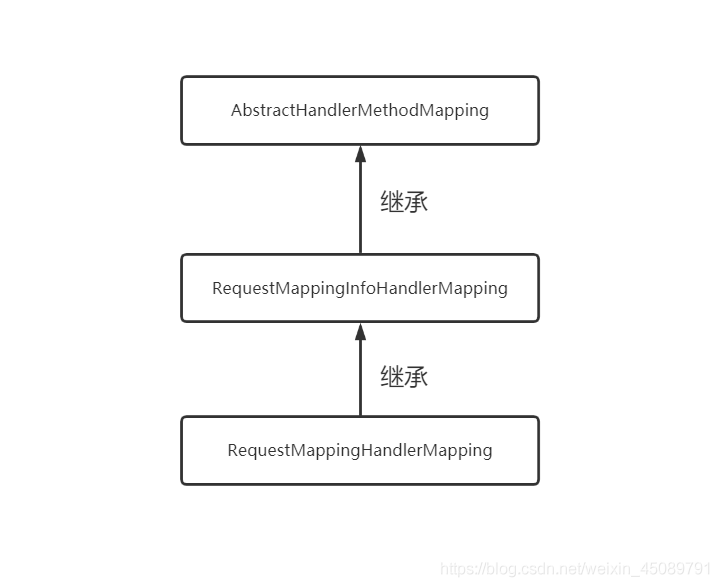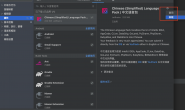点击“终码一生”,关注,置顶公众号
每日技术干货,第一时间送达!
如何利用自定义注解放行springsecurity项目的接口
在实际项目中使用到了springsecurity作为安全框架,我们会遇到需要放行一些接口,使其能匿名访问的业务需求。但是每当需要当需要放行时,都需要在security的配置类中进行修改,感觉非常的不优雅。
例如这样:

所以想通过自定义一个注解,来进行接口匿名访问。在实现需求前,我们先了解一下security的两种方行思路。
-
第一种就是在 configure(WebSecurity web) 方法中配置放行,像下面这样:
@Override
public void configure(WebSecurity web) throws Exception {
web.ignoring().antMatchers("/css/**", "/js/**", "/index.html", "/img/**", "/fonts/**", "/favicon.ico", "/verifyCode");
}-
第二种方式是在 configure(HttpSecurity http) 方法中进行配置:
@Override
protected void configure(HttpSecurity httpSecurity) throws Exception
{
httpSecurity
.authorizeRequests()
.antMatchers("/hello").permitAll()
.anyRequest().authenticated()
}两种方式最大的区别在于,第一种方式是不走 Spring Security 过滤器链,而第二种方式走 Spring Security 过滤器链,在过滤器链中,给请求放行。
在我们使用 Spring Security 的时候,有的资源可以使用第一种方式额外放行,不需要验证,例如前端页面的静态资源,就可以按照第一种方式配置放行。
有的资源放行,则必须使用第二种方式,例如登录接口。大家知道,登录接口也是必须要暴露出来的,不需要登录就能访问到的,但是我们却不能将登录接口用第一种方式暴露出来,登录请求必须要走 Spring Security 过滤器链,因为在这个过程中,还有其他事情要做,具体的登录流程想了解的可以自行百度。
了解完了security的两种放行策略后,我们开始实现
-
首先创建一个自定义注解
@Target({ElementType.METHOD}) //注解放置的目标位置,METHOD是可注解在方法级别上
@Retention(RetentionPolicy.RUNTIME) //注解在哪个阶段执行
@Documented //生成文档
public @interface IgnoreAuth {
}这里说明一下,@Target({ElementType.METHOD}) 我的实现方式,注解只能标记在带有@RequestMapping注解的方法上。具体为什么下面的实现方式看完就懂了。
-
接下来创建一个security的配置类SecurityConfig并继承WebSecurityConfigurerAdapter
@EnableGlobalMethodSecurity(prePostEnabled = true, securedEnabled = true)
public class SecurityConfig extends WebSecurityConfigurerAdapter
{
@Autowired
private RequestMappingHandlerMapping requestMappingHandlerMapping;
/**
* @ description: 使用这种方式放行的接口,不走 Spring Security 过滤器链,
* 无法通过 SecurityContextHolder 获取到登录用户信息的,
* 因为它一开始没经过 SecurityContextPersistenceFilter 过滤器链。
* @ dateTime: 2021/7/19 10:22
*/
@Override
public void configure(WebSecurity web) throws Exception {
WebSecurity and = web.ignoring().and();
Map<RequestMappingInfo, HandlerMethod> handlerMethods = requestMappingHandlerMapping.getHandlerMethods();
handlerMethods.forEach((info, method) -> {
// 带IgnoreAuth注解的方法直接放行
if (StringUtils.isNotNull(method.getMethodAnnotation(IgnoreAuth.class))) {
// 根据请求类型做不同的处理
info.getMethodsCondition().getMethods().forEach(requestMethod -> {
switch (requestMethod) {
case GET:
// getPatternsCondition得到请求url数组,遍历处理
info.getPatternsCondition().getPatterns().forEach(pattern -> {
// 放行
and.ignoring().antMatchers(HttpMethod.GET, pattern);
});
break;
case POST:
info.getPatternsCondition().getPatterns().forEach(pattern -> {
and.ignoring().antMatchers(HttpMethod.POST, pattern);
});
break;
case DELETE:
info.getPatternsCondition().getPatterns().forEach(pattern -> {
and.ignoring().antMatchers(HttpMethod.DELETE, pattern);
});
break;
case PUT:
info.getPatternsCondition().getPatterns().forEach(pattern -> {
and.ignoring().antMatchers(HttpMethod.PUT, pattern);
});
break;
default:
break;
}
});
}
});
}
}在这里使用Spring为我们提供的RequestMappingHandlerMapping类,我们可以通过requestMappingHandlerMapping.getHandlerMethods();获取到所有的RequestMappingInfo信息。
源码部分
这里简单说一下RequestMappingHandlerMapping的工作流程,便于理解。我们通过翻看源码

继承关系如上图所示。
AbstractHandlerMethodMapping实现了InitializingBean 接口
public interface InitializingBean {
void afterPropertiesSet() throws Exception;
}
AbstractHandlerMethodMapping类中通过afterPropertiesSet方法调用initHandlerMethods进行初始化
public void afterPropertiesSet() {
this.initHandlerMethods();
}
protected void initHandlerMethods() {
String[] var1 = this.getCandidateBeanNames();
int var2 = var1.length;
for(int var3 = 0; var3 < var2; ++var3) {
String beanName = var1[var3];
if (!beanName.startsWith("scopedTarget.")) {
this.processCandidateBean(beanName);
}
}
this.handlerMethodsInitialized(this.getHandlerMethods());
}再调用processCandidateBean方法:
protected void processCandidateBean(String beanName) {
Class beanType = null;
try {
beanType = this.obtainApplicationContext().getType(beanName);
} catch (Throwable var4) {
if (this.logger.isTraceEnabled()) {
this.logger.trace("Could not resolve type for bean '" + beanName + "'", var4);
}
}
if (beanType != null && this.isHandler(beanType)) {
this.detectHandlerMethods(beanName);
}
}通过调用方法中的isHandler方法是不是requestHandler方法,可以看到源码是通过RequestMapping,Controller 注解进行判断的。
protected boolean isHandler(Class<?> beanType) {
return AnnotatedElementUtils.hasAnnotation(beanType, Controller.class) || AnnotatedElementUtils.hasAnnotation(beanType, RequestMapping.class);
}判断通过后,调用detectHandlerMethods 方法将handler注册到HandlerMethod的缓存中。
protected void detectHandlerMethods(Object handler) {
Class<?> handlerType = handler instanceof String ? this.obtainApplicationContext().getType((String)handler) : handler.getClass();
if (handlerType != null) {
Class<?> userType = ClassUtils.getUserClass(handlerType);
Map<Method, T> methods = MethodIntrospector.selectMethods(userType, (method) -> {
try {
return this.getMappingForMethod(method, userType);
} catch (Throwable var4) {
throw new IllegalStateException("Invalid mapping on handler class [" + userType.getName() + "]: " + method, var4);
}
});
if (this.logger.isTraceEnabled()) {
this.logger.trace(this.formatMappings(userType, methods));
}
methods.forEach((method, mapping) -> {
Method invocableMethod = AopUtils.selectInvocableMethod(method, userType);
this.registerHandlerMethod(handler, invocableMethod, mapping);
});
}
}通过registerHandlerMethod方法将handler放到
private final Map<T, HandlerMethod> mappingLookup = new LinkedHashMap();map中。
而requestMappingHandlerMapping.getHandlerMethods()方法就是获取所有的HandlerMapping。
public Map<T, HandlerMethod> getHandlerMethods() {
this.mappingRegistry.acquireReadLock();
Map var1;
try {
var1 = Collections.unmodifiableMap(this.mappingRegistry.getMappings());
} finally {
this.mappingRegistry.releaseReadLock();
}
return var1;
}最后就是对map进行遍历,判断是否带有IgnoreAuth.class注解,然后针对不同的请求方式进行放行。
handlerMethods.forEach((info, method) -> {
// 带IgnoreAuth注解的方法直接放行
if (StringUtils.isNotNull(method.getMethodAnnotation(IgnoreAuth.class))) {
// 根据请求类型做不同的处理
info.getMethodsCondition().getMethods().forEach(requestMethod -> {
switch (requestMethod) {
case GET:
// getPatternsCondition得到请求url数组,遍历处理
info.getPatternsCondition().getPatterns().forEach(pattern -> {
// 放行
and.ignoring().antMatchers(HttpMethod.GET, pattern);
});
break;
case POST:
info.getPatternsCondition().getPatterns().forEach(pattern -> {
and.ignoring().antMatchers(HttpMethod.POST, pattern);
});
break;
case DELETE:
info.getPatternsCondition().getPatterns().forEach(pattern -> {
and.ignoring().antMatchers(HttpMethod.DELETE, pattern);
});
break;
case PUT:
info.getPatternsCondition().getPatterns().forEach(pattern -> {
and.ignoring().antMatchers(HttpMethod.PUT, pattern);
});
break;
default:
break;
}
});
}
});看到这里就能理解我最开始的强调的需标记在带有@RequestMapping注解的方法上。我这里使用到的是configure(WebSecurity web)的放行方式。它是不走security的过滤链,是无法通过 SecurityContextHolder 获取到登录用户信息的,这点问题是需要注意的。
PS:防止找不到本篇文章,可以收藏点赞,方便翻阅查找哦。
往期推荐









